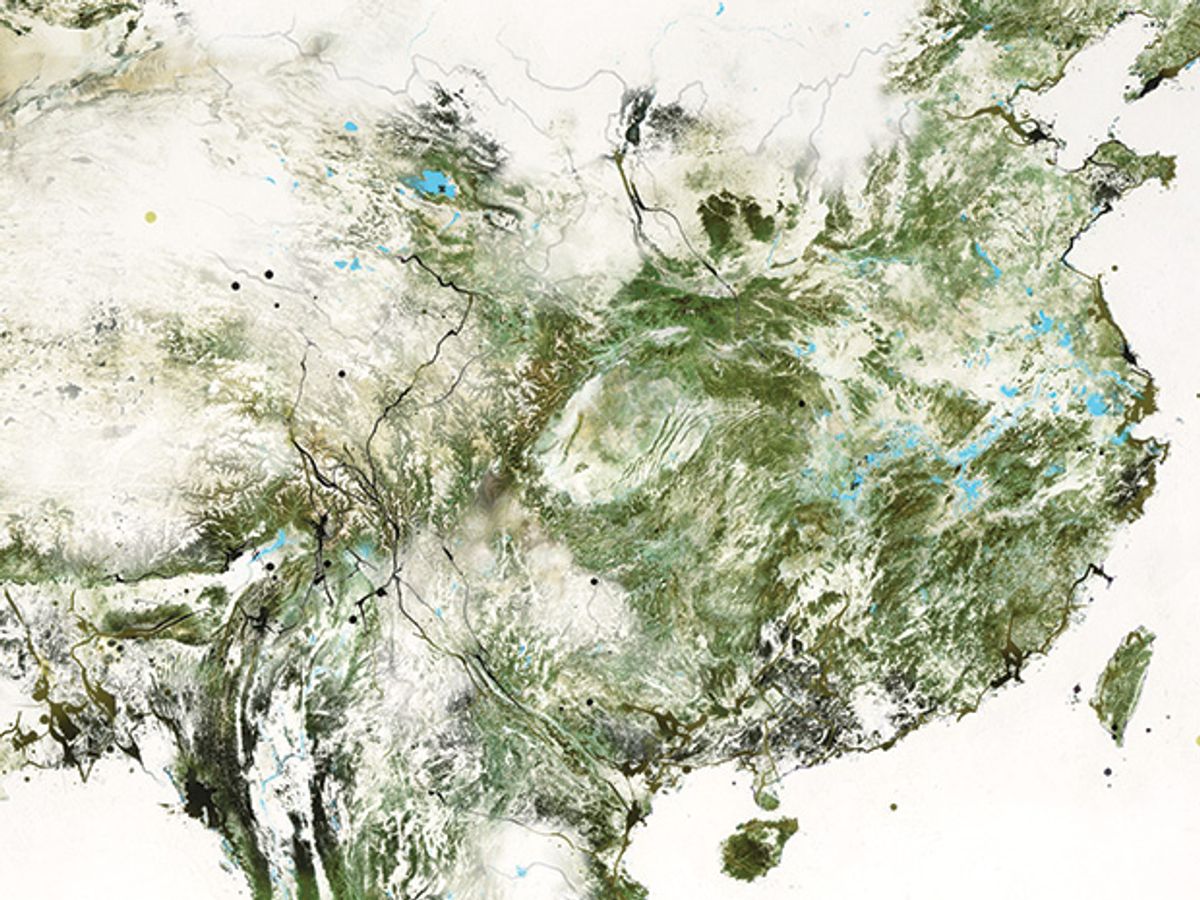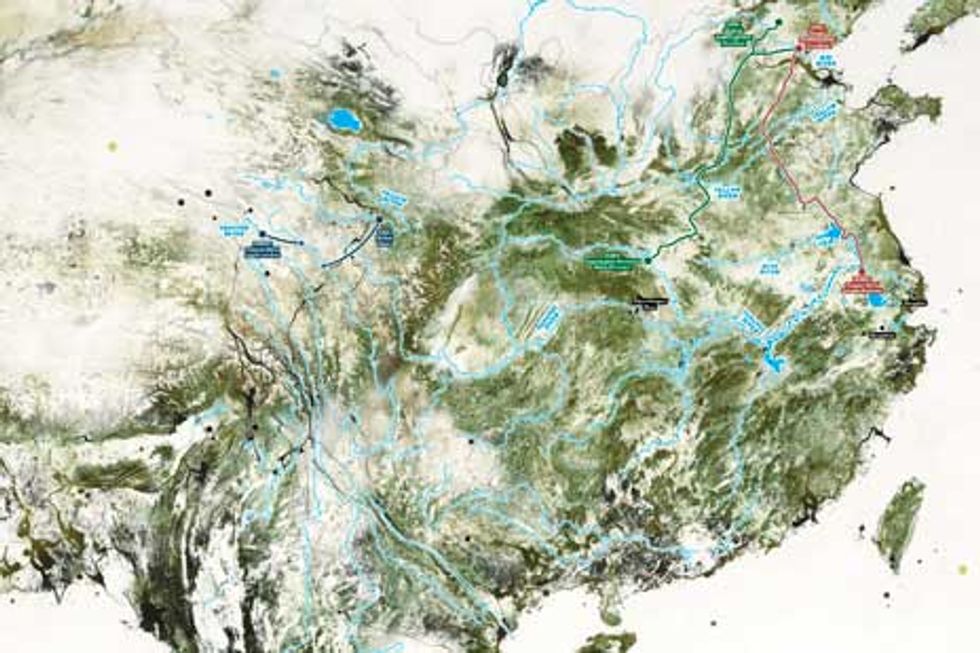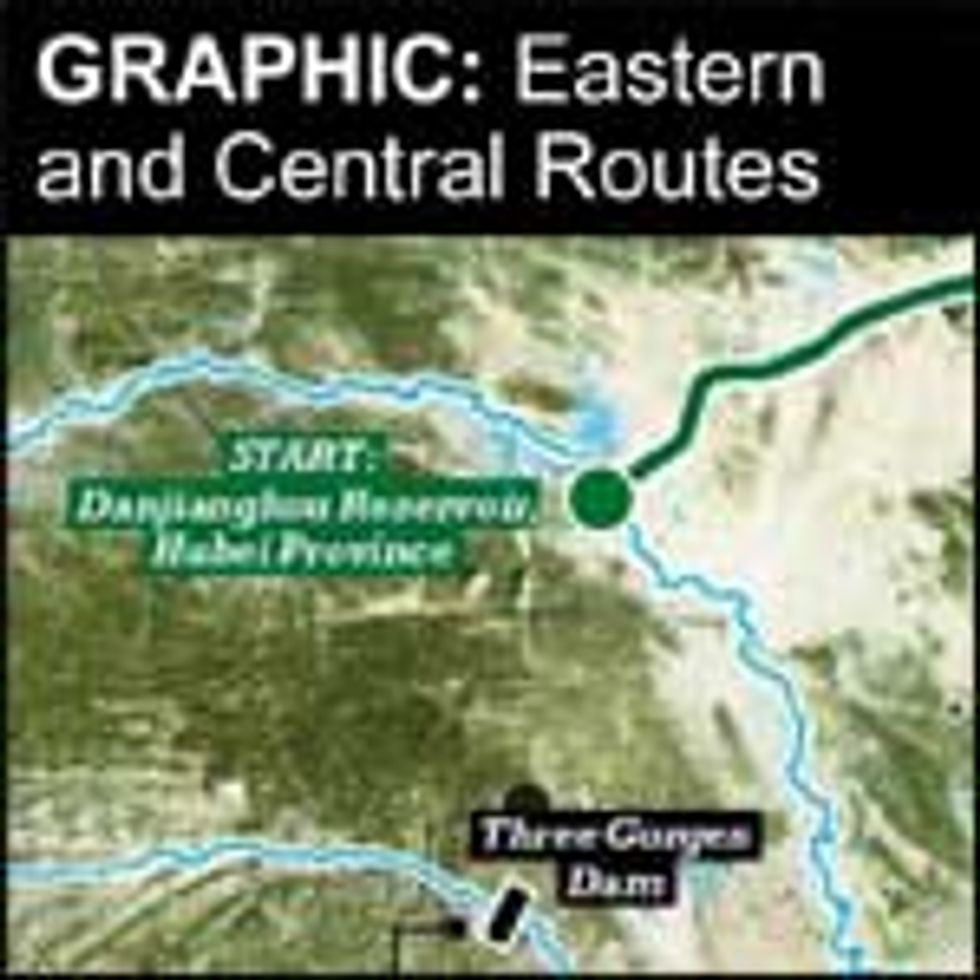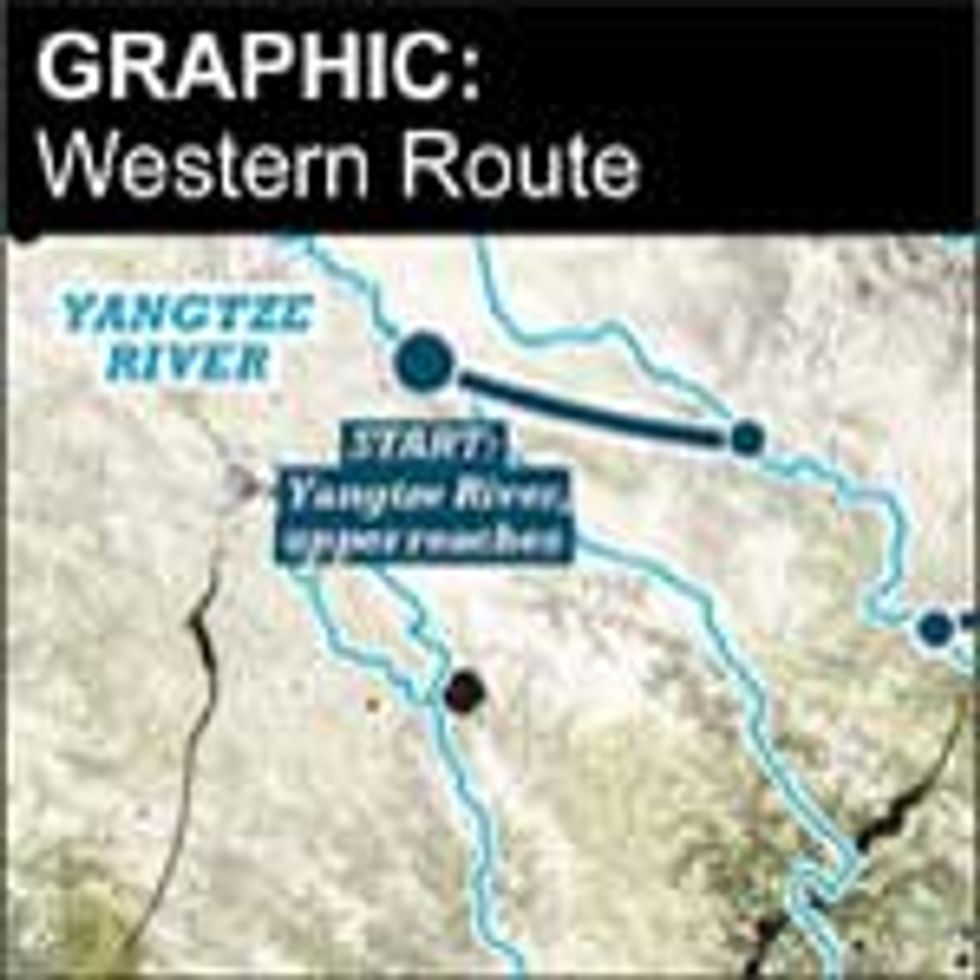Map: China Rewires Its Rivers
A massive water diversion project aims to slake the north’s thirst

In 1952, Mao Zedong visited the great rushing rivers of China’s south and suggested that the thirsty north “borrow” some. Thus was born the South-to-North Water Diversion Project.
Nearly 60 years later, construction is under way on the biggest water redirection scheme in history. When complete, the US $62 billion project will transport 44.8 million megaliters of water per year from the lush river valleys of the south to the parched industrial north—enough to flood Beijing to a height of almost 3 meters. The three-pronged project, which consists of an eastern route, a western route, and a central route, includes the construction of more than 1800 kilometers of pipelines and reinforced canals, at least 23 pumping stations, up to 7 dams, and 2 massive tunnels under the Yellow River. Some parts won’t be finished until midcentury.
The northern need for water is great. According to a 2005 report from the China Institute of Water Resources and Hydropower Research, northern China is home to about 44 percent of the population but has only 14 percent of the water. In the northern industrial city of Tianjin, the destination of the project’s eastern route, the amount of freshwater available per capita is well below 1 ML annually, the level most water experts consider essential to meet basic needs.
What’s more, Chinese industry is concentrated in the north, as is the energy production that drives it. China’s thermoelectric power plants will need 82 million ML of water per year by 2030.
Such a big project will have big consequences. Draining one river to fill another, as the western route does, will upset the balance of power—literally—in the string of hydroelectric dams along the Yangtze River. And some destinations, such as Tianjin, don’t even want the water, because of its high cost and poor quality.
Officials can’t even claim that the project will meet the north’s needs. “In the short term, it might ease the water shortage in the north,” says Ma Jun, director of the Beijing-based Institute of Public and Environmental Affairs. But in the long term, Jun says, conservation and efficiency measures must help solve China’s water crisis.
This article originally appeared in print as “The Long Haul.”
To Probe Further
Check out the rest of the special report: Water vs Energy.



